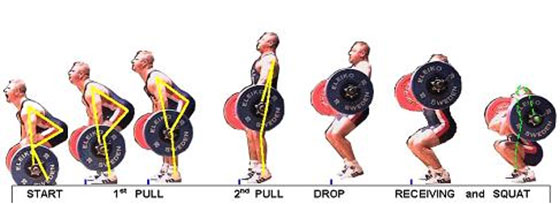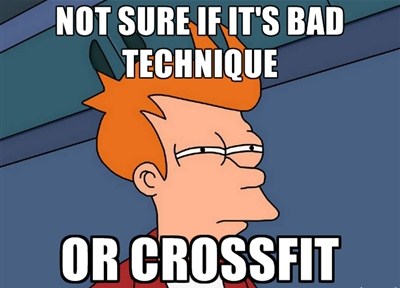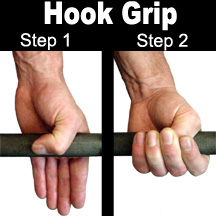The Clean
Sibling to the Snatch and in the same sentence as the Jerk, the Clean gets a focus in CrossFit because of the athleticism it develops. It is also one of the most difficult lifts we perform.
Take a look at the previously published Snatch write-up for similar focus points and explanation.
In quick review, the Olympic lifts are essential while pursuing fitness and athleticism, specifically overall strength, power, and coordination (while increasing ROM and focusing on results). They are of course the lifts we have seen for years as a part of the Olympics. We use the Clean and related exercises at Amplify to foster athletic development, and we can safely perform the lift even while members are still learning the basics of the movement.
So let's get to it.
In looking at Cleans, as with any important lift or physical exercise, some debate surrounds the move and the pursuit of the best and most efficient technique. Like the Snatch, a variety of start and finish positions exist as well as countless drills to build power and muscle strength. These lifts and drills for the Clean all aim for the same goal of standing a barbell up into a front rack position, and also hope to trigger endocrine and central nervous system responses for future development (energy use, hormone development, impulse transmission, and memory of body position).

Often times a Clean and that goes through a full squat gets the designation "Squat Clean" in CrossFit. Interestingly enough, there is no such thing. (n00b)
A Clean is a movement where an athlete picks the barbell up off the ground and "cleanly" stands it up in the front rack position. The term Power Clean is used to refer to such a powerful pull that the athlete did not need to drop under the bar as much, and thus a full squat was unnecessary. Power Cleans always/must keep the hips above parallel in the catch before standing. Calling a Clean a Squat Clean is mostly for beginners to help them understand the difference and also realize a trained athlete must squat fully in order to receive the barbell for maximal load. If the term "Hang" is used, it means the barbell starts up at the hips at some point... not the ground. High-Hang, Hang, and Low-Hang are common terms for positioning that starts higher than the floor.
Coming from the floor, both the Clean and the Power Clean use the same mechanics, so the remainder of this write-up can pertain to both.
- A synopsis of the Clean from CrossFit.com can be found here.
- A Weightlifting 101 section on USAWeightlifting.com can be found here.
- A write-up of Olympic weightlifting from CatalystAthletics.com can be found here.
Although the general Olympic Lifting community stays away from high repetition workouts, CrossFit embraces and pushes these into its weekly programming as well as its competitions. The critique is that an Olympic Lift like the Clean should be done explosively, at a repetition rate that develops speed, power, balance, and coordination. The argument is that in order to develop this type of lift it should be performed with no more than 1-5 reps at a time, in a small set range. CrossFit often pushes upwards of the 100 rep mark for the metabolic conditioning effect and concurrently gets knocked for it. A response to this critique is that the movements used for conditioning purposes are at loads that are generally not near a 1rep max, and can be executed safely with efficient movement to develop strength endurance. Nonetheless it's a valid argument against our system, and one that questions overtraining or potential injury. This is why a smart workout progression and great technique are stressed in any good CrossFit gym.
Also debatable is the starting position of the feet. A wider stance may better suit more experienced lifters but a typical pulling position under the hips is best for most. Novice athletes tend to land extremely wide instead of in a squat stance and foot position. This will all be adjusted to the lifter according to skeletal frame as well as flexibility. Terms may differ (jumping vs. extending), but in general, a pull and land position are required.
Finally, width of grip on the barbell can vary. Again, this is mostly due to flexibility and the best set-up for a strong Jerk position. What doesn't tend to change is the need for a hook grip as an athlete progresses and wants to develop a heavy Clean.
A quick note on hook grip, for those ready: Let go of the hook grip in your "catch" as you drive your elbows up into your front squat position. Some athletes have the flexibility and confidence to hold on to the hook grip through the Clean and before preparing for the Jerk (if called for), but most people will allow the barbell to move onto the fingertips better by releasing the thumb. Play around with what's best for you.
Let's see what else we're focusing on with some quick video demos on Cleans.
California Strength http://www.youtube.com/user/CaliforniaStrength
We will stick to focusing on barbell Clean technique, but much of this can relate to any other object as well... although the body position will change slightly depending on the implement (dumbbells, medicine ball, heavy stone, keg, or other item).
Next up is a slow motion Clean & Jerk by Olympian Chad Vaughn. Focus on the Clean as he explains back angle, shin position, and riding down into the squat.
Slo-Mo Barbell Clean
Note that the set-up for the Clean is slightly modified from a traditional Deadlift starting position. Kelly Starrett, with help from Jesse Burdick and Diane Fu, goes over the basic differences in this excellent video: Deadlift vs. Oly Lift Set-up.
Other videos for reference...
Coach Mike Burgener (more beginner's instruction here)
USA Weightlifting How-To
Which leads us to the final points. What can we gain from all the debate and research as well as coaching and athlete testimony and video? What is usable for us mere mortal athletes... the person simply looking to develop fitness from the Clean?
A Quick Clean Set-up Checklist: 1. Feet flat 2. Arms straight 3. Chest up 4. Back set 5. Hamstrings loaded
Slight nuances in form are mostly a result of a person's specific biomechanics and coach/athlete preference.
Common Errors in Clean Development: 1. Flexibility/Mobility 2. Bar path problems 3. Too much arm involvement 4. Poor hip extension 5. Immature squat technique
Mobility We've focused on this in weeks and years past, but it will be a recurring theme: maximize your flexibility and range of motion, and your missed lifts will become fewer and fewer (not to mention you'll remain safe through the catch). Make sure you can properly hang power clean, power clean, and front squat first. Remember, this is a high skill move with lots of balance and coordination required. Warm-up is needed, which includes drills and segments of a full Clean. PVC and light loads will help alert the joints, namely the hip sockets.
Bar Path This is the most common flaw, and starts in the set-up. If the bar is not moving up the body correctly from the ground (ie: moving away from the body at the start) then the whole lift is compromised. A very common result from a very common error. Correct this while keeping your chest and shoulders up and over the bar and your success rate increases immediately. Which leads us to...
Hip Extension It's the point where the barbell gets to what is commonly referred to as your power position... the bar makes contact with the very top of your thighs and you've put an acceleration on the weight in set up for triple extension (hips, knees, and ankles). It is sometimes coached as the "jump," although that can often be a bad cue for certain people, since they may move to the balls of their feet too early or kick the bar out from their hips too far à la a kettlebell swing. Full hip extension is a requirement in a max effort Clean.
So... can you spot successful lifts with good form? But more importantly, knowing what to do and actually doing it are two different things. Get to the gym and be ready to get better.
Just tell your significant other you'll be cleaning. And done.
-Scott, 6.24.2013



